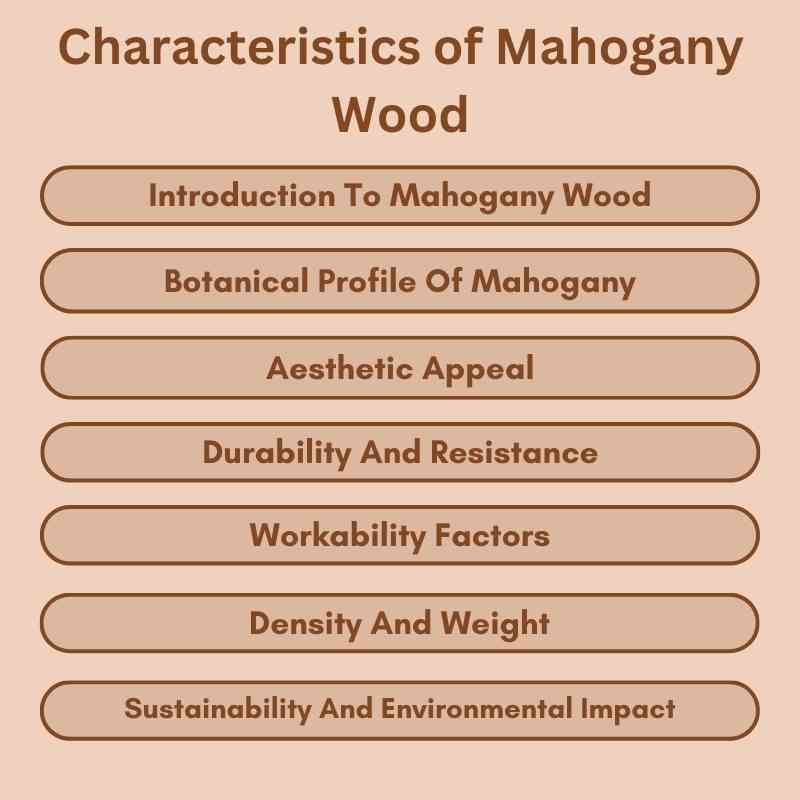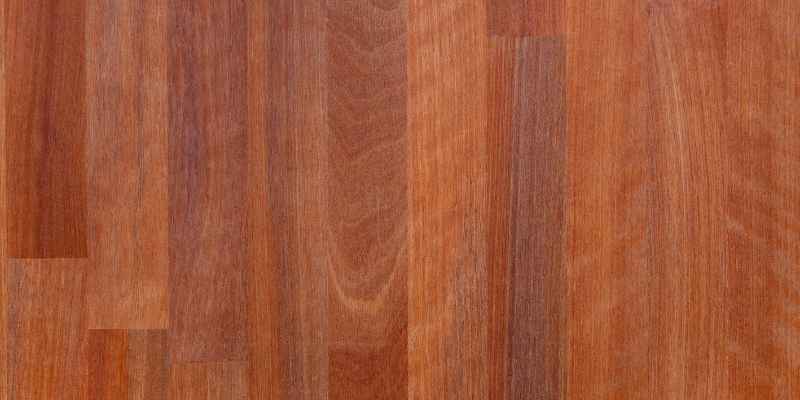Mahogany wood is known for its rich color, durability, and fine grain. It resists warping and is easy to work with, making it a favorite for furniture and cabinetry.
Mahogany has long been celebrated for its beauty and strength. This tropical hardwood features a deep reddish-brown hue that darkens over time, enhancing its visual appeal. Its fine, straight grain gives it a luxurious look, making it a popular choice for high-end furniture and musical instruments.
Mahogany is not only aesthetically pleasing but also incredibly durable, resisting scratches and dents. Its natural resistance to moisture and insects adds to its longevity. As a result, mahogany remains a timeless option for those seeking quality craftsmanship in their wood selections.
Introduction To Mahogany Wood
Mahogany wood is famous for its beauty and strength. This rich, reddish-brown timber has a long history and many uses. People admire mahogany for its durability and fine grain. It is a preferred choice for furniture, boats, and musical instruments.
Origins And Historical Significance
Mahogany originates from the Americas. It was first used by the ancient Mayans and Aztecs. They valued it for its quality and appearance. European colonists discovered mahogany in the 18th century. They exported it worldwide, boosting its popularity.
In history, mahogany represented wealth and luxury. Fine furniture made from mahogany graced many homes. Today, it remains a symbol of sophistication.
Common Uses In Today’s World
Mahogany wood is versatile. It is used in various industries. Here are some common uses:
- Furniture: Tables, chairs, and cabinets.
- Musical Instruments: Guitars and pianos.
- Boat Building: Hulls and interiors.
- Flooring: Elegant and durable flooring options.
Each application highlights mahogany’s unique qualities. Its beauty enhances any product. Mahogany continues to be a top choice for craftspeople and builders.

Botanical Profile Of Mahogany
The botanical profile of mahogany reveals its unique traits. Mahogany is known for its rich color and durability. This tropical hardwood is prized in furniture making and construction. Understanding its characteristics helps in appreciating its value.
Species Variations
There are several species of mahogany. Each has distinct features. Here are the main species:
- Swietenia macrophylla – Commonly known as Honduras mahogany. It is the most popular type.
- Swietenia mahagoni – Known as Cuban mahogany. It is less common and highly sought after.
- Swietenia humilis – Also called Mexican mahogany. It is smaller and less dense.
| Species Name | Common Name | Characteristics |
|---|---|---|
| Swietenia macrophylla | Honduras Mahogany | Rich color, high durability, easy to work with |
| Swietenia mahagoni | Cuban Mahogany | Deep color, fine grain, often used in luxury items |
| Swietenia humilis | Mexican Mahogany | Lightweight, smaller size, often used for cabinetry |
Geographical Distribution
Mahogany trees grow in tropical regions. They thrive in Central and South America. Here are key areas:
- Central America – Countries like Honduras and Guatemala.
- South America – Found in Brazil and Peru.
- Caribbean Islands – Notably in Cuba and the Bahamas.
These regions provide the ideal climate for mahogany growth. The rich soil and rainfall contribute to its quality.
Aesthetic Appeal
Mahogany wood is renowned for its stunning aesthetic appeal. Its rich colors and unique grain patterns make it a favorite in furniture and decor.
Color And Grain Patterns
Mahogany wood offers a beautiful range of colors:
- Deep reddish-brown shades dominate.
- Colors can vary from light to dark.
- Some pieces show a slight golden hue.
The grain patterns are equally captivating:
- Straight and fine grain is common.
- Occasional wavy or interlocked patterns add charm.
- Natural variations enhance each piece’s uniqueness.
Finishing And Polishing Qualities
Mahogany wood is easy to finish and polish. Its smooth surface allows for a stunning shine:
- Use a high-quality wood finish for best results.
- Polishing enhances the color’s depth.
- Protection from scratches and stains is vital.
Many options exist for finishing:
| Finish Type | Description |
|---|---|
| Oil | Enhances natural color and grain. |
| Varnish | Provides a durable and glossy surface. |
| Lacquer | Dries quickly, offers a smooth finish. |
These finishing options highlight the wood’s natural beauty. Mahogany’s aesthetic appeal makes it a top choice for many applications.
Durability And Resistance
Mahogany wood is famous for its durability and resistance to various elements. This makes it a top choice for furniture and construction. Homeowners value mahogany for its ability to withstand time and wear.
Natural Durability Against Decay
Mahogany has a high natural durability. It resists decay from moisture and fungi. This wood can last for decades, even in harsh conditions.
| Feature | Benefit |
|---|---|
| Water Resistance | Prevents swelling and warping. |
| Fungal Resistance | Stays strong in humid environments. |
| Longevity | Lasts for generations. |
Resistance To Pests And Diseases
Mahogany wood is not a favorite among pests. Termites and other insects tend to avoid it. This wood also shows good resistance to diseases.
- Termite Resistant: Keeps your furniture safe.
- Ant Resistant: Reduces the risk of damage.
- Mold Resistant: Maintains its beauty and integrity.
Workability Factors
Mahogany wood is known for its excellent workability. Craftsmen appreciate its ease of handling. Understanding its workability factors helps in choosing the right tools and techniques.
Machining And Tool Handling
Machining mahogany is straightforward due to its fine grain. It cuts smoothly and produces a clean finish. Here are key points about machining mahogany:
- Blades: Use sharp blades for optimal results.
- Router: A router works well for shaping edges.
- Sandpaper: Start with medium grit, then finish with fine grit.
Be cautious of tear-out in areas with knots. Adjust your feed rate to minimize this risk. Proper tool handling ensures a high-quality finish.
Gluing And Fastening Compatibility
Mahogany wood bonds well with various adhesives. Use high-quality glue for the best results. Here are some adhesive options:
| Adhesive Type | Compatibility |
|---|---|
| Polyurethane | Excellent adhesion |
| PVA (White Glue) | Great for indoor projects |
| Epoxy | Strong for high-stress areas |
Fastening mahogany with screws works well. Pre-drilling holes prevents splitting. Consider these fastening methods:
- Screws: Use coarse-thread screws.
- Nails: Finish nails are effective.
- Brackets: Use metal brackets for additional support.
Mahogany’s properties make it a versatile choice for various projects.
Density And Weight
Mahogany wood is known for its unique density and weight. These characteristics play a significant role in its applications. Understanding these traits helps in making informed choices for projects.
Impact On Transportation And Construction
The density of mahogany affects its transportation and construction uses.
- Heavy weight: Mahogany is heavier than many other woods.
- Transportation costs: Higher weight increases shipping costs.
- Handling difficulties: Requires more effort during loading and unloading.
- Stability: Dense wood offers better stability in construction.
Comparison With Other Woods
Mahogany’s density and weight differ from other popular woods.
| Wood Type | Density (kg/m³) | Weight (LBS/ft³) |
|---|---|---|
| Mahogany | 640 | 40 |
| Oak | 750 | 47 |
| Pine | 500 | 31 |
In comparison, oak is denser than mahogany. Pine is much lighter. This difference affects their uses in furniture and construction.
Sustainability And Environmental Impact
Mahogany wood is valued for its beauty and durability. Its environmental impact is crucial to consider. Sustainable practices help preserve forests and ecosystems. Responsible sourcing ensures that mahogany remains a viable resource.
Conservation Efforts
Many organizations focus on conserving mahogany trees. These efforts include:
- Protecting natural habitats
- Restoring damaged ecosystems
- Promoting reforestation projects
Conservation programs aim to reduce illegal logging. They also educate communities about the benefits of sustainable forestry. Healthy forests support biodiversity and combat climate change.
Certification And Responsible Sourcing
Certification programs help consumers choose sustainable wood. Look for labels like:
| Certification | Details |
|---|---|
| FSC (Forest Stewardship Council) | Ensures responsible forest management |
| PEFC (Programme for the Endorsement of Forest Certification) | Promotes sustainable forest practices |
Responsible sourcing means selecting mahogany from certified suppliers. This ensures that the wood is harvested legally and sustainably. Supporting these practices helps protect forests for future generations.
Economic Value
Mahogany wood holds significant economic value. Its beauty and durability
make it highly sought after. Many people invest in this wood for furniture,
flooring, and decorative items. Understanding its price and investment potential
is crucial for buyers and sellers alike.
Price Point And Affordability
The price of mahogany wood varies widely. Factors include quality, type,
and availability. Here are some key price points:
| Type of Mahogany | Average Price per Board Foot |
|---|---|
| Honduran Mahogany | $8 – $15 |
| Spanish Cedar | $5 – $12 |
| Philippine Mahogany | $4 – $10 |
While mahogany may seem expensive, its quality justifies the cost.
It’s important to consider long-term value. Here are some affordability tips:
- Shop around for the best prices.
- Consider buying in bulk.
- Look for local suppliers.
Investment And Antique Market
Mahogany wood is not just for furniture. It is also a wise investment.
Many collectors seek antique mahogany items. Here are key investment points:
- Antique mahogany pieces often increase in value.
- High-quality items attract collectors.
- Restoration can enhance value significantly.
The antique market thrives on mahogany wood. Items like cabinets and tables
can fetch high prices. Investing in quality pieces can lead to substantial
returns over time.
Maintenance And Care
Mahogany wood is beautiful and durable. Proper care helps maintain its appearance. Regular maintenance keeps it looking new and enhances its lifespan.
Cleaning And Preservation Tips
Cleaning mahogany wood requires gentle methods. Use a soft cloth for dusting. Avoid harsh chemicals. Here are some effective tips:
- Dust Regularly: Use a microfiber cloth.
- Use Mild Cleaners: OPT for soap and water.
- Wipe Spills Immediately: Prevent stains and damage.
- Avoid Excessive Moisture: Keep wood dry.
To preserve mahogany, consider these steps:
- Apply Furniture Polish: Use sparingly for shine.
- Use UV Protectants: Prevent fading from sunlight.
Long-term Care Strategies
Long-term care is essential for mahogany wood. Follow these strategies for lasting beauty:
| Care Strategy | Description |
|---|---|
| Control Humidity: | Maintain 30-50% humidity levels. |
| Regular Inspections: | Check for signs of wear or damage. |
| Refinishing: | Sand and reapply finish every few years. |
These practices ensure your mahogany wood remains stunning for years.
Future Of Mahogany
The future of mahogany wood holds great promise. As demand for sustainable materials rises, mahogany remains a popular choice. Its beauty and durability make it a favorite among woodworkers and designers alike. Innovations in technology will shape its use in various industries.
Innovation In Wood Technology
New technologies are transforming how we use mahogany. Here are some key innovations:
- Engineered Wood Products: These products enhance strength and stability.
- Eco-Friendly Treatments: Non-toxic finishes protect wood without harming the environment.
- 3D Printing: Custom designs can be created quickly and efficiently.
These innovations help ensure mahogany remains a viable option. They also address environmental concerns. Sustainable practices are crucial for the future of this valued wood.
Predictions For Woodworking And Design
The woodworking and design industries will evolve. Here are some predictions for mahogany:
- Increased Demand: More consumers will seek high-quality, sustainable materials.
- Custom Furniture: Personalized designs will gain popularity.
- Integration with Technology: Smart furniture will emerge, incorporating mahogany.
Designers will focus on blending tradition with modernity. Expect to see mahogany in both classic and innovative forms. Its rich color and grain will remain timeless.
| Trend | Description |
|---|---|
| Sustainability | Focus on responsible sourcing and eco-friendly practices. |
| Customization | Increased interest in tailored designs for individual preferences. |
| Technology Integration | Use of smart technology in furniture design and functionality. |
Future trends will highlight the versatility of mahogany. It will continue to be an essential material in woodworking and design.

Frequently Asked Questions
What Are The Key Features Of Mahogany Wood?
Mahogany wood is renowned for its rich color, durability, and fine grain. Its deep reddish-brown hue adds elegance to furniture and cabinetry. It is resistant to warping and has excellent workability, making it a favorite among woodworkers. Additionally, mahogany possesses natural resistance to pests and decay.
How Durable Is Mahogany Wood?
Mahogany wood is highly durable, often lasting for decades. Its natural oils make it resistant to moisture and pests. This durability makes it ideal for both indoor and outdoor applications. With proper care, mahogany maintains its integrity and beauty, making it a long-lasting investment in any project.
Is Mahogany Wood Environmentally Friendly?
Sustainability depends on the source of the mahogany. Responsible harvesting practices and certification from sustainable sources are crucial. Look for products labeled as FSC-certified to ensure eco-friendliness. By choosing responsibly sourced mahogany, you can enjoy its beauty without compromising environmental integrity.
How Does Mahogany Compare To Other Woods?
Mahogany stands out for its rich color and workability. Compared to oak and maple, it is often softer and easier to shape. Its natural resistance to decay makes it preferable for furniture. Overall, mahogany combines aesthetic appeal with practical benefits, making it a popular choice among wood enthusiasts.
Conclusion
Mahogany wood is celebrated for its rich color and durability. Its resistance to decay makes it ideal for both furniture and flooring. The beautiful grain patterns add elegance to any space. Understanding these characteristics helps in making informed choices for your woodworking projects.
Choose mahogany for lasting beauty and functionality.

